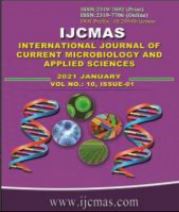


 National Academy of Agricultural Sciences (NAAS)
National Academy of Agricultural Sciences (NAAS)

|
PRINT ISSN : 2319-7692
Online ISSN : 2319-7706 Issues : 12 per year Publisher : Excellent Publishers Email : editorijcmas@gmail.com / submit@ijcmas.com Editor-in-chief: Dr.M.Prakash Index Copernicus ICV 2018: 95.39 NAAS RATING 2020: 5.38 |
Dairy activity is one of the main staple economic sources and also a viable option for people in rural India especially small and marginal farmers based on the geophysical and ecological conditions. This can be seen at two levels; one is an economic source and the second a given asset. So far, it was viewed as an economic asset and symbol of social status based on who possess them. But the intervention of watershed programs across the country has brought livestock and dairy activity to reduce the income gaps among various social sections of the society. This has addressed through the livelihood component under IWMP and involved marginalized communities based on priority by providing milch animals. The crucial element for the successful implementation of dairy activity in the drought-hit region of Rayalaseema shows people’s active participation through IWMP from various vantage points. This program introduced the dairy activity to lower-income groups predominantly by setting up objectives about various components in order to overcome persistent problems such as unemployment, less productivity, low rainfall, drought, and migration. Implementation of dairy activity has been yielding good results in improving the lives of landless, asset-less, marginal farmers, and women in rural areas.
 |
 |
 |
 |
 |